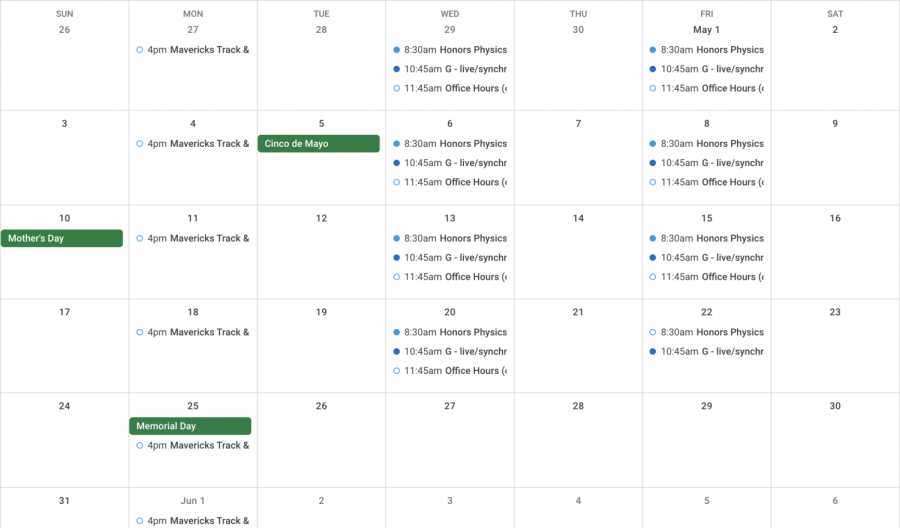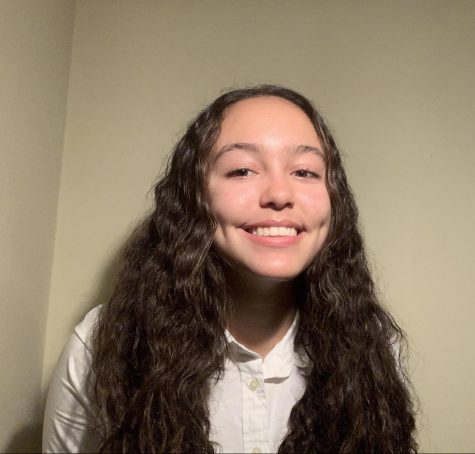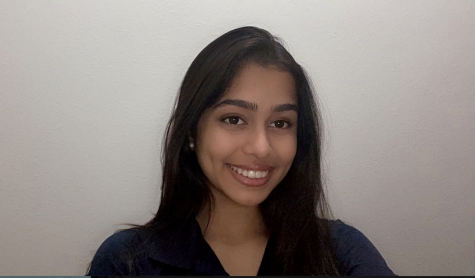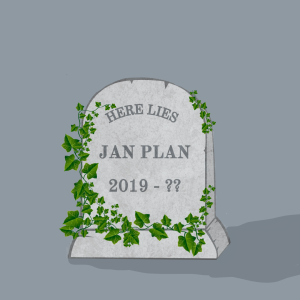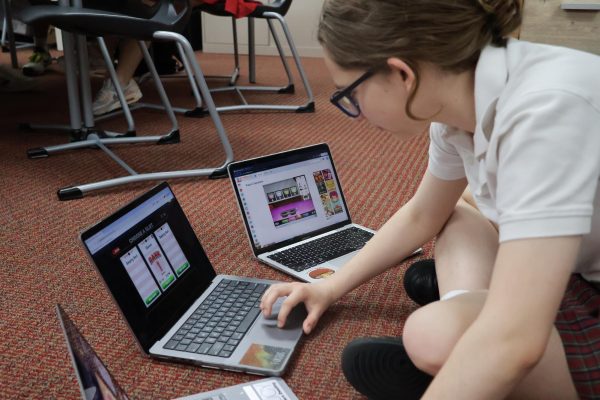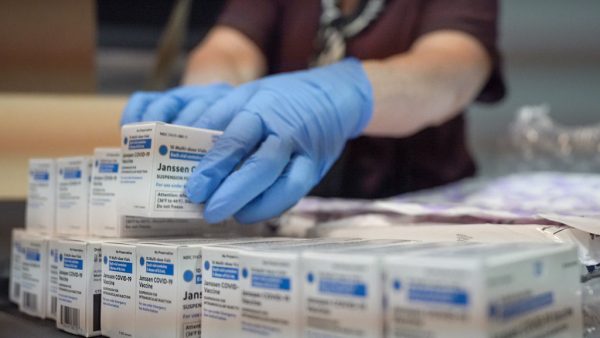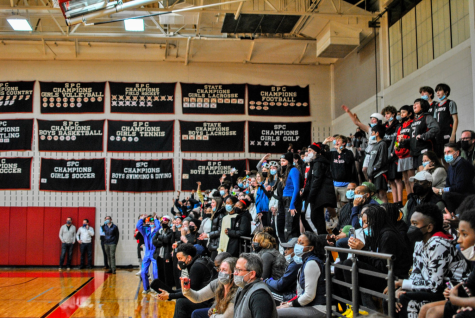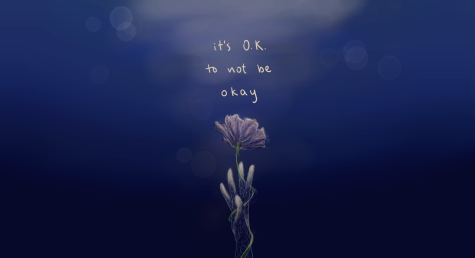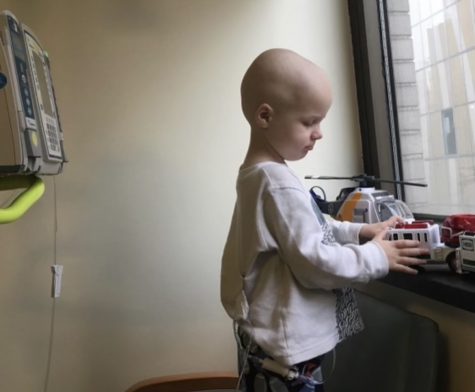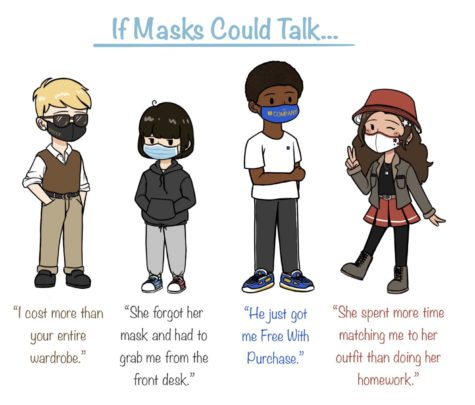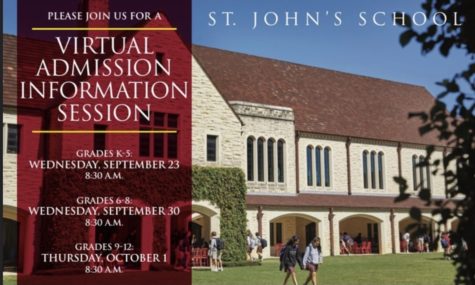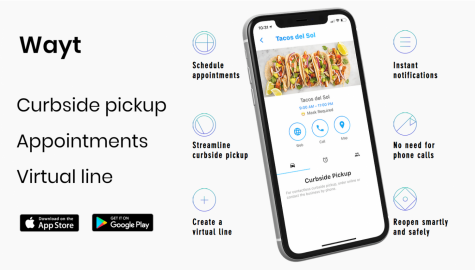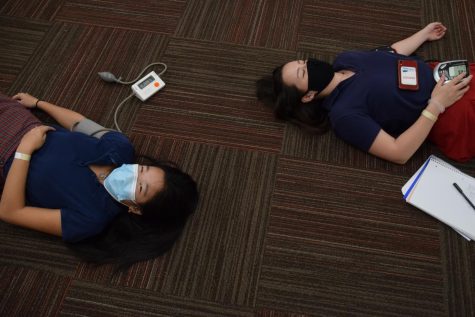Students resume classes through Google Hangouts
Students learning online on March 31 due to the COVID-19 pandemic.
April 6, 2020
Rachel Kim woke with a start as her mother rushed into her bedroom. Squinting into the morning light, Kim glanced at her alarm clock. 10 a.m., it read. Nearly 30 minutes late for her chemistry class, Kim jumped out of bed, grabbed her laptop and logged on to Google Hangouts.
On March 25, Head of Upper School Hollis Amley sent an email to Upper School students that addressed school cancellation in light of the COVID-19 pandemic. The email included a modified schedule for online learning, which features alternating days of “synchronous” classes, where students and teachers meet face-to-face for a live lesson, and “asynchronous” classes, where students are assigned independent work to complete.
Tuesday, March 31 marked the first day of virtual classes for the St. John’s community. Upper School faculty members and students met using Google Hangouts to resume classes after an extended spring break.
Despite sleeping through one of her first classes, Kim, a junior, said that the first week of online classes went better than she had expected.
“The teachers were able to control the classroom environment,” Kim said. “We were doing the same types of activities that we’d normally be doing in school, which I didn’t think would be possible.”
Though classes commenced less than a week ago, students have noticed a lightened work load.
“I’m grooving,” sophomore Josh Siegel said. “Last semester, I had an average of four major assignments every week, plus ensembles most mornings and DaVincis. Now, we have seven days to complete what would’ve been two days’ worth of work.”
Siegel, who is enrolled in AP Latin and AP World History, said that the College Board’s modifications to AP Exams have made his transition back into school significantly less stressful since teachers have covered most topics that will be included in the shortened exams.
“I don’t think I can describe the amount of euphoria that I felt when I found out that all the AP’s were only going to be 45 minutes long,” Siegel said. “Knowing that I have most of the material under my belt is such a relief.”
Because so many AP courses now revolve around reviewing old material, students can complete much of their work independently. This is especially true for senior-heavy courses, as many seniors have opted to complete final projects rather than attending class on a daily basis. Beginning April 6, no seniors are required to attend any of their classes.
“In AP Bio, there are six people in my class now,” junior Anne-Charlotte Gillard said. “It’s nice to have so much review time for the exam, but I miss the social component of class. It’s much more self-guided.”
Many seniors enjoy the brevity of their classes. Still, some were saddened by their last days at St. John’s taking place online.
“This week was bittersweet,” senior Chad Faykus said. “I got to see my friends again, but it was also my final time sitting in a high school class.”
Due to the COVID-19 pandemic, many senior traditions have been postponed or cancelled, including senior spring break trips, spring SPC and prom. Faykus considers virtual school to be one positive outcome of the virus amidst the disruption of his senior year.
“The teachers understand that everyone is going through tough times, especially us seniors,” Faykus said. “They are trying to make the best of it by giving us smaller amounts of work.”
While the student response to online schooling has been fairly positive, the first week of virtual learning has ushered in a new series of obstacles for teachers and students alike. Gillard, for example, said that the challenges she has faced thus far revolve around technological difficulties.
“Sometimes the teacher’s connection cuts in and out, and I can’t hear what they’re saying,” Gillard said. “That becomes a problem in synchronous classes, when we’re learning crucial material that I can’t necessarily teach myself.”
According to Gillard, her internet connection during class time is spotty as her entire family—four people in total—often works from their computers at the same time.
“All of our schedules are pretty morning-heavy,” Gillard said, “so we’re usually sharing the network. On top of that, my computer is pretty old—I’ve had to attend class from my phone a couple of times.”
Siegel said that he witnessed teachers and students alike struggle to master Google Hangouts.
“Several students log themselves off by accident every class,” Siegel said. “At one point, my teacher tried to share their screen and ended up logging off the chat for five minutes.”
Students also expressed positive feedback about the school day’s structure with the new schedule. According to Gillard, having classes in the morning helped her return to a more normal eating and sleeping schedule after two weeks in quarantine.
“During break, I’d get out of bed at 11 and then wouldn’t fall asleep until 2 or 3 a.m. each night,” Gillard said. “It’s helpful to have something to do in the mornings that gets me up and active.”
Other students, such as Kim, find that the schedule allows them to sleep more than they typically can during the school week.
“I can roll out of bed a few minutes before class starts,” Kim said. “Classes end at noon, so I can finish my work during the day. I don’t have to stay up late working like I used to.”
Beyond the scope of academics, student organizations ranging from French Club to Student Affairs Council coordinated virtual meeting times to ensure that extracurriculars continue off-campus.
Siegel, the sophomore class president, said that SAC has been working tirelessly to provide a sense of community during this difficult time. Most recently, SAC used social media to hold a Coffeehouse event. Student musicians performed from their homes, and SAC live-streamed each performance on their Instagram account.
“It was a great way for students to connect with classmates in a supportive, productive way,” Siegel said. “It made me and many of my friends feel a little bit closer to school even though we’re all apart.”


